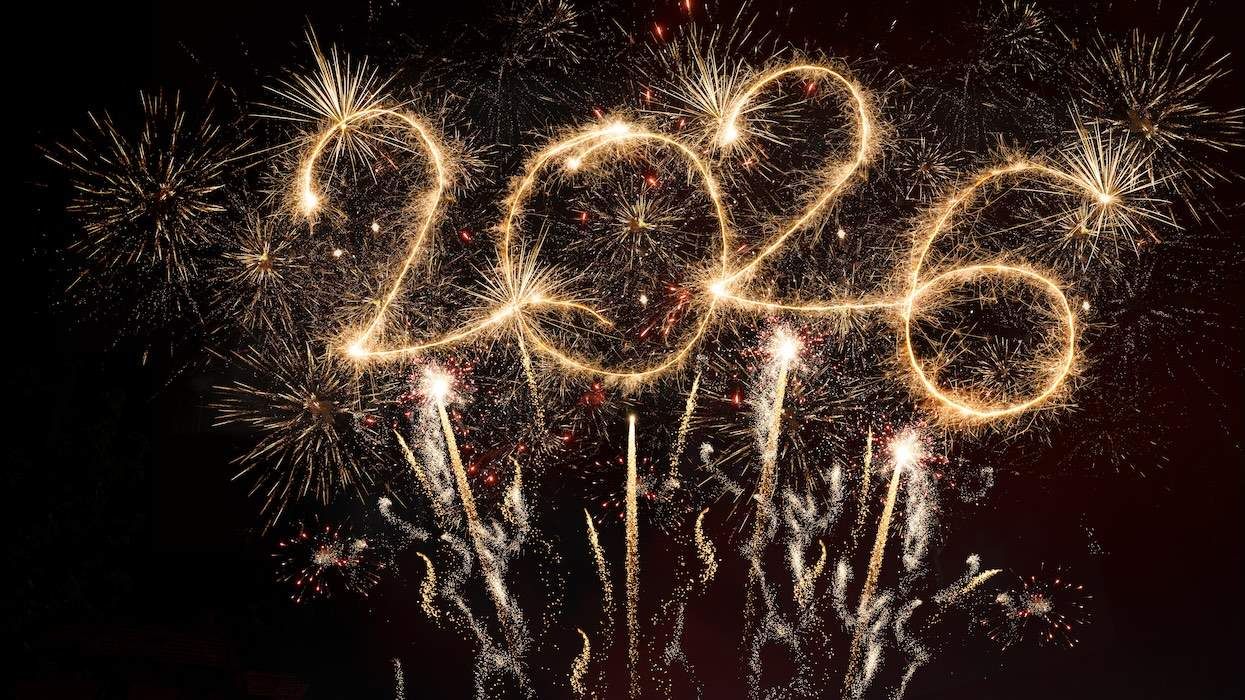Joe Niekro was a journeyman Major League Baseball pitcher for 21 years, playing for seven teams. When The New York Times reported on his death in late autumn 2007, it incorrectly said he was a member of the Baseball Hall of Fame.
As fast as I could, I emailed an editor and alerted the paper to the error. A few minutes later, someone got back to me with the acknowledgement that I was right. I printed that email out and showed it to everyone in the office. “I corrected The New York Times,” I boasted. They were never wrong, and I caught them. (Niekro's brother Phil is a Hall of Famer.)
It used to be that finding a mistake in a New York Times article was akin to finding a needle in a haystack. If there was a typo in a sentence, there would be a headline of the next day’s issue: “Reader Finds a Wrinkle in the Gray Lady" (the nickname for the venerable paper).
Now, like everyone else, the Times rushes to get articles uploaded so that it can start collecting the clicks before anyone else. This is no secret about the Gray Lady. It rushes to put it up, and then someone backreads while the story is live and hurries to correct the mistakes.
The Times, 90 percent of the time, gets the stories — the exclusives — before anyone else. Having worked in PR for a long time, I always went to the Times first with any news of the myriad corporations I worked for. I landed several Page 1 stories — a veritable badge of honor.
But one thing the Times always did was its homework. That’s why, arguably, it is the most trusted name in news, and which is why it is coming under attack from transgender advocates who don’t trust the way the Times is reporting on this severely marginalized community.
I’m not going to rehash all the disruption and confusion the Times has caused for transgender people, but as an aside, I’ll point this out: It recently did a story about a health care company having doubts about covering gender-affirming care for kids. Let’s stop there for a second. Does anyone know a health care provider that jumps at the chance to cover anything?
But here is a more serious charge. Missouri Attorney General Andrew Bailey cited this flawed New York Times article by Emily Bazelon to defend an “emergency” order that banned gender-affirming health care for all transgender people in the state.
According to GLAAD, the Times’ coverage has elevated transgender critics without alerting readers to their anti-LGBTQ+ histories and their coordination and connections with longtime anti-LGBTQ+ groups like Alliance Defending Freedom.
Times management has responded with statements rebuffing the critique: “Our coverage of transgender issues, including the specific pieces singled out for attack, is important, deeply reported, and sensitively written,” the paper’s top editors wrote in a note to staffers in February. And in a March 2 address to colleagues, Publisher and Chairman A.G. Sulzberger said reviews found that the much-criticized coverage "was rigorously reported and edited, and that our reporters went to great lengths to ensure each piece was written with sensitivity, nuance and care."
As a veteran PR person and a writer, I’ve been trying to make sense of the Times' approach to covering the trans community by including the critics, or "trans skeptics," as GLAAD points out. Further, I'm struggling to understand why the Times is treating transgender people as an issue rather than human beings who deserve validation.
The general rule to being a good reporter or even a first-class news outlet is to balance stories by providing the proverbial two sides to a coin. To give you the most obvious example, Fox News makes no attempt to present the other side, and when it does, it’s half-hearted at most.
For years, reporters “balanced” their climate change coverage, including comments from climate skeptics and organizations alongside the science of climate change in their stories, even though skeptics were rebutting sound and proven science.
The way the media handled climate change before 2015 was partly to blame for the public’s misinterpretation about the seriousness of the problem for decades.
This confusion was due in large part to phony, right-wing skeptic organizations, predominantly formed and funded by the conservative Koch brothers and backed more so by Big Oil. These spurious groups nibbled around the edges of climate science, cherry-picking findings and fudging the facts.
When I worked on behalf the U.N. Intergovernmental Panel on Climate Change, the world’s foremost authority on climate change, in the run-up to the 2015 Paris accords, my job was not only to media-train climate scientists around the world to defend their science but also to inform the media that there was no room for skeptics in stories about climate change.
After years of doing so, the media no longer includes any comments from climate deniers. The science, at the end of the day, is irrefutable, and the media eventually realized you don’t balance a story about climate change. There is only one side.
I see the same use of deniers in the way media outlets now, most especially the Times, are treating the transgender community.
First, a few years ago, no one was making a controversy about being transgender, particularly trans youth. The right-wing, like it did with climate change, started nibbling around the edges of trans issues and whipping up false flags, and the media started following them down rabbit holes, and the extremists, like the Missouri AG, are lapping up the stories that give them cover.
I reached out to a friend and one of the smartest people I know. Katarina Ferrucci recently received her Ph.D. in clinical and population health research from UMass Chan Medical School and her master's in behavioral and social health science from Brown University School of Public Health. Ferrucci specializes in understanding the quality of care among gender-minority individuals in the U.S., and that includes the trans population.
“The hostility I’ve witness toward the trans community over the past few years is certainly arising from emotionally driven provocation,” Ferrucci said. “These ‘thought leaders’ of anti-trans movements are using incendiary methods that we’ve seen prove successful in the past in other hate-based campaigns.”
“All I have heard for the past eight years or so is about the divide that politicians are fueling in this country, but people seem to be complacent that that is what’s happening and not taking action in their own environment to eradicate that," she said
The Times fuels the debate around transgender identity by including these hostile politicians and groups, a.k.a. “trans skeptics,” in its coverage when medical research and science says that there is only one side on this coin.
“Among most providers and professional associations there is consensus that research and outcomes have proven gender- affirming care to be necessary and lifesaving for children, adolescents, and adults,” Ferrucci pointed out.
That the Times' “balanced” coverage of transgender affects the mental and physical health of trans individuals also shows how glaringly wrong it is for the Times to treat this not as something that is deeply personal but rather as an issue.
“Treating it as an issue that includes the ‘trans skeptics’ as you refer to them, directly calls into question the legitimacy of someone’s existence and the procedures and treatments that can help someone feel aligned in the way that their body and mind are informing them is correct,” Ferrucci explained.
In my job as a writer for The Advocate, I get to talk to many trans individuals, most recently with Zachary Drucker, a talented film director known for two of her documentaries, The Lady and the Dale and Queenmaker, currently on Hulu.
While the intent of the interview initially was to talk about her latest projects, the conversation turned to the personal struggles of being trans, mainly due to misconceptions about gender identity.
A vast majority of the population does not know a transgender person – that’s not news. Trans individuals could essentially be from another planet to most people. When she came out, Caitlyn Jenner put the most prominent face to being transgender, and unfortunately, to many, she still represents — and wrongly — what it means to be transgender.
Every single time I speak to an acquaintance about interviewing someone who is transgender for a column, they immediately ask, “What do you think of Caitlyn Jenner?” Always. That hit me while I was talking to Drucker. “When you meet someone who finds out you are transgender, is their first question about Jenner?” I asked Drucker. “Yes, you’re right. It usually is,” she said.
More and more people are coming forward revealing their true identity, like Elliot Page, for example, but the learning curve for the general public about what that means and entails is steep.
“I think that a lot of people can’t understand or relate to it. And I think that because people can’t relate, they treat it as a non-ssue or that it is someone else’s problem,” Ferrucci said.
I asked Ferrucci if she thought the media was covering the trans community adequately. “I think they are handling it exactly as I would expect them to, which is unfortunately not well and not enough," she replied. "Throughout the height of COVID I shared a lot of news about anti-trans bills popping up on my private social media — which was really when actions taken toward passing all of this hateful legislation were revving up. I had a significant number of people say to me that they had no idea that any of this was going on.”
She added, “Articles or shows that are highlighting these attacks on health care for trans people have broadly done a weak job of including trans voices and going beyond sharing opinions of medical professionals. I think the media could work to better include listener friendly education for whatever platform they are speaking from."
Ferrucci added that she thinks TikTok has done a great job of giving creators, educators, and professionals the ability to succinctly share a lot of information in a short period of time with the general public. “I think the media needs to take a lesson from that app,” she said.
In other words, humanizing the story. That was exactly like climate change. We humanized the story and made it more personal, not only for the scientists to better explain it, but for the average citizen to understand it.
The only difference this time is that transgender individuals are not issues, but human beings. They are not debate points. They are not a story that needs to be “balanced.” As Ferrucci noted, the media should find ways for people who don’t know a trans person to relate to them.
These human beings struggle mightily, and instead of recognizing that struggle, the Times errs by creating storylines that confuse readers into thinking there is something wrong with having gender dysphoria.
“Because this experience is something that is so unique and, in the grand scheme of things, rare, I don’t expect many people to be able to place themselves in the shoes of someone experiencing gender dysphoria, and to be able to compare it to any experience they’ve had related to having that feeling that something isn’t right," Ferrucci said.
"But I do expect people to be able to reflect upon, What if I wasn’t believed? This attitude is partly generational, because I think Gen Z has a really unique ability to sniff out BS and protect the greater good, so hopefully, in the future things will be different,” she concluded.
Views expressed in The Advocate’s opinion articles are those of the writers and do not necessarily represent the views of The Advocate or our parent company, equalpride.





































































Charlie Kirk DID say stoning gay people was the 'perfect law' — and these other heinous quotes